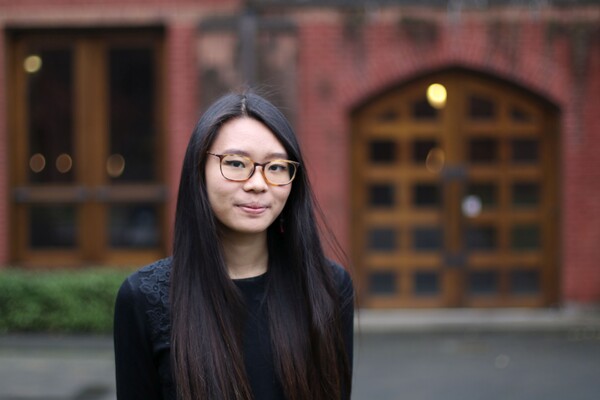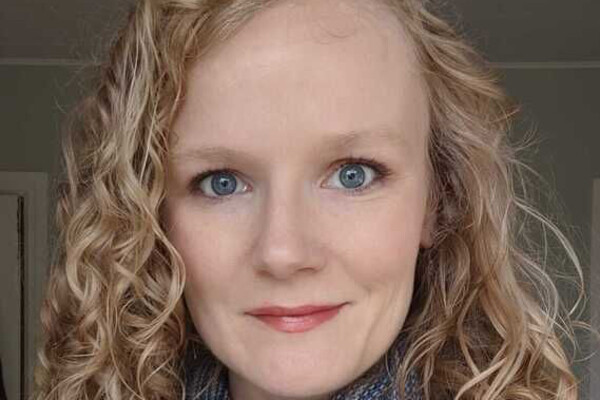Naaz Desai, Rehabilitation Sciences Institute

Student name: Naaz Desai
Supervisor: Milos R. Popovic
PhD thesis: Addressing the gaps in assessment and treatment of the upper extremity in rehabilitation of individuals with neurological conditions
Regaining upper extremity function is crucial for increased independence following stroke and spinal cord injury (SCI). The studies in this thesis are an extension of the work that I have been doing for the past 10+ years and aims to address the gaps identified in the field of upper extremity rehabilitation specific to this work. The objectives of this thesis were to develop and assess the psychometric properties of a 3D printed version of an upper extremity outcome assessment tool called the Toronto Rehabilitation Institute-Hand Function Test (TRI-HFT) and to assess the feasibility of stimulating interscapular muscles using transcutaneous functional electrical stimulation (FES). The overall thesis is divided into 3 sub-studies. The first study explored the feasibility of 3D printing the original TRI-HFT objects and assessed the inter and intra-rater reliability and convergent validity of the 3D printed TRI-HFT in individuals with chronic stroke. The second study focused on assessing the inter and intra-rater reliability and criterion and construct validity of the 3D TRI-HFT in the sub-acute and chronic SCI populations.
We hypothesized that the TRI-HFT could be 3D printed and that the 3D printed test would have high reliability and validity in both stroke and SCI populations. The third study was built upon the existing FES protocols by adding stimulation of the interscapular muscles. Specifically, the stimulation of the Lower Trapezius (LT), Serratus Anterior (SA) and Upper Trapezius (UT) along with Anterior Deltoid during forward flexion and LT, SA and UT along with Middle Deltoid during abduction was investigated in able bodied individuals. The underlying hypothesis was that it would result in an increased range and potentially more natural reaching movement elicited by virtue of FES.
In the first and second study we found that all objects of the TRI-HFT could be successfully 3D printed with an error margin of less than 10% except for the Paper and the Sponge objects, which had to be redesigned. The 3D TRI-HFT showed a high inter and intrarater reliability in stroke and SCI. The 3D TRI-HFT showed strong criterion validity when compared to the scores on the different components of the Graded Redefined Assessment of Strength, Sensibility and Prehension (GRASSP) outcome assessment tool in the SCI population. Similarly, the 3D TRI-HFT showed strong construct validity when compared to the Chedoke- McMaster Stroke Assessment-Arm whereas there was a moderate correlation between the 3D TRI-HFT and the Chedoke-McMaster Stroke Assessment-Hand and the 3D TRI-HFT and the Fugl Meyer Assessment-Hand. In the third study, the LT, SA and UT could be successfully stimulated using surface FES. The maximum reach in abduction for FES of middle deltoid along with the interscapular muscles was 51.77 17.54 compared to FES for middle deltoid alone (43.76 15.32 ; Z = -2.701, p = 0.007). Stimulating the same interscapular muscles along with the Anterior Deltoid did not result in an increase in maximum arm reach when compared to stimulation of Anterior Deltoid alone.
This work essentially builds on the current state of assessment and FES treatment of the upper extremity thereby addressing the immediately identified gaps in literature in this domain.
Naaz completed her PhD from Rehabilitation Sciences Institute at University of Toronto under the supervision of Dr. Milos R. Popovic in November 2021. Her PhD projects analysed and addressed the gaps in rehabilitation practice specific to upper extremity rehabilitation for individuals with acquired neurological conditions. Alongside her research, Naaz has always been an actively practicing clinician and hence she was in an ideal position to identify and fill in the knowledge and practice gaps in the field of neurorehabilitation. Her two unique and highly impactful research projects are already making a difference in the world of rehabilitation here at home and internationally.
Her first PhD project was to build and validate a standardized upper extremity assessment tool. She created and conducted preliminary psychometric evaluation of a 3D printed version of an existing validated upper extremity assessment called the Toronto Rehabilitation Institute-Hand Function Test. It is important to mention that she was one of the developers of this original test. Her analysis showed that the 3D printed approach is not only viable but retains test properties and is an ideal solution for accessibility issues around use and application of outcome assessments in both research and clinical practice. Her research in a way energises the movement towards accessible, easy to use validated clinical assessments and revolutionizes how and where these assessments can be done to support high quality research. The 3D printed test developed in her PhD is now a commercially available product.
Dr. Desai’s other stream of research addresses the gaps in intervention in rehabilitation of the upper extremity specific to the use of functional electrical stimulation (FES) treatment. FES is currently being used in clinical practice for neuro-recovery following conditions like stroke and spinal cord injury. Naaz’s research defined new complex upper extremity stimulation protocols for stimulating the interscapular muscles; important muscle groups that have not been included previously in FES treatment protocols. These protocols were successfully developed and validated and have since been deployed for bed side use and form a part of the FES treatment tool kit available to clinicians across North America.
During her training, Naaz was supported via various scholarships including the CIHR- Frederick Banting and Charles Best Canada Doctoral Scholarship, Ontario Graduate Scholarship, Toronto Rehabilitation Institute Scholarship, University of Toronto Fellowship, Unilever/ Lipton Graduate Fellowships in Neurosciences and the Lois Snelling Physical Therapy Bursary. Besides these, she is the recipient of various awards including the Geoff Fernie Impact Award, Jal Tata Research Student Award and the Physiotherapy Foundation of Canada Graduate Student Research Award. Given that she is a fresh PhD graduate, she is highly published in her field. She has 30 peer reviewed publications to her credit, and she has presented her work at various scientific conferences including both National and International level conferences, some as an invited expert in the field of upper extremity rehabilitation.
Dr. Desai is currently a Postdoctoral Fellow at Krembil Research Institute- University Health Network and works alongside Dr. Robert Chen, who is a renowned Neurologist in the field of Movement disorders. Dr. Chen’s laboratory examines the pathophysiology of movement disorders using invasive and non-invasive brain stimulation techniques and studies these techniques as potential treatments for movement disorders. Naaz’s goal is to further her knowledge on non-invasive stimulation techniques including both peripheral and brain stimulation techniques and its application for understanding disease mechanisms as well as its use as potential treatment modalities. Her goal is to master the skills required for independent research and someday be able to practice as an independent Neuroscientist and an Academician.


